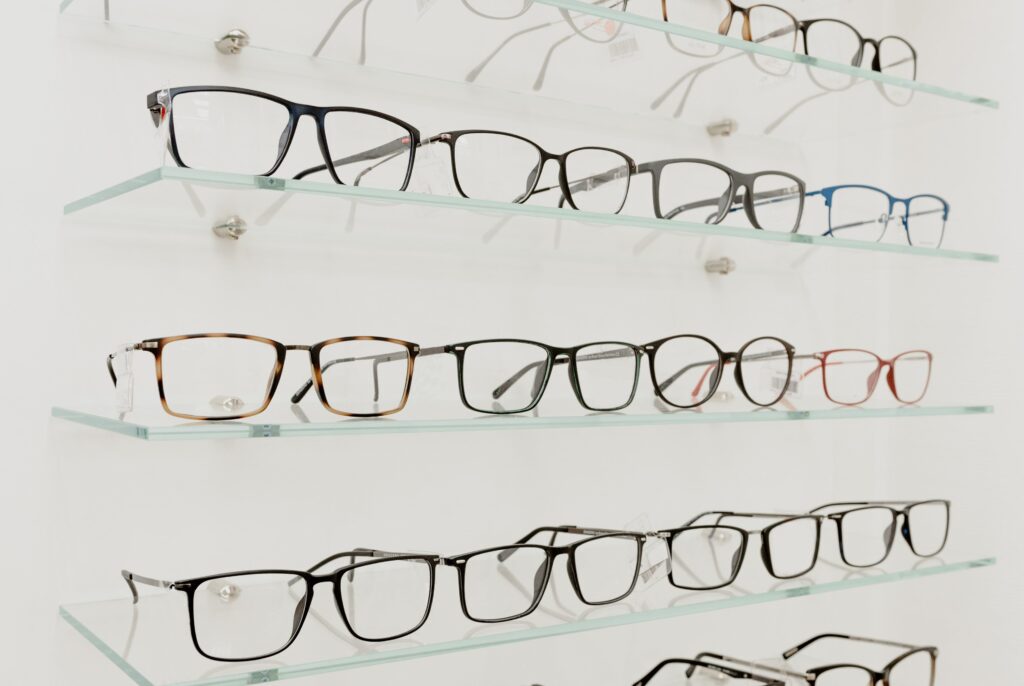What is the process of making prescription eyeglass lenses?
The optician takes measurements for pupil distance (PD) and frame curvature after you have tried on several frames, and found the perfect frames, to die for. You can’t wait to see yourself in your new frames!
In contrast to chain stores that claim to provide lenses within an hour, we manufacture custom prescription lenses using high-quality lenses, which takes several days to achieve. Our eye doctors are highly skilled and have extensive experience.
High-quality optical lenses
It is then the lab technician who chooses the actual lens for your frames after tracing the inside of the frames to measure the exact dimensions, then digitally maps out how the lenses will be crafted in accordance with your vision correction needs. As a result, not all lenses are the same. There are different lenses for computer use, progressive vision, and transition lenses that darken in direct sunlight. Although nearly every lens starts out as a clear lens blank, the lenses do not all look the same.
Using liquid metal, a small block is attached to the lens as soon as the computer has mapped out your vision correction according to the frame measurements. A diamond precision tool is used to cut the blank to a thinner shape for the prescription, followed by laser marking of the lens for identification and fitting, and polishing.
Lenses that are technically perfect
Each lens we produce is accurate to 1/1000th of a diopter through digital processes, computer calculations, and machines.
The block is removed once the lens has been perfectly cut to your prescription, and then the lens is manually inspected for any minute flaws or imperfections.
After being freshly cut, newly-cut lenses undergo a multi-step chemical cleaning process before they are coated with a multilayered scratch-resistant coating. The coating then undergoes several hours of curing in order to become scratch-resistant.
Coatings for advanced lenses
After being freshly cut, newly-cut lenses undergo a multi-step chemical cleaning process before they are coated with a multilayered scratch-resistant coating. The coating then undergoes several hours of curing in order to become scratch-resistant.
After this, the lenses are coated with anti-reflective (AR) coatings and sealed in a vacuum chamber containing six separate chemical crystals the size of a hockey puck.
During the AR coating process, electrical voltage vaporizes the crystals, coating the lenses with chemical gases to reduce glare, repel dust, and make them easier to clean. “From start to finish, it takes about five hours for the entire coating process to complete.
A keen eye for detail
In the edging machine, lenses are cut down to fit exactly to your frame after they have been AR coated. A rough burr grinder and a finely-pointed edger are used in the process, similar to dental instruments. In order to secure lenses in place, lenses may be beveled, grooved, or have holes drilled to hold bushings or screws, depending on the frame size and style and prescription requirements.
The lab technician uses super hot coloured dyes to hand-dip lenses that are not polarized, a process that allows him or her to precisely control the colour intensity and gradation. While it is simply a simple process, it can take hours for the dye to absorb into the lenses.
The best vision you’ve ever had
Upon completion of the lenses, your frames are carefully packaged and shipped back to Low Cost Glasses for a final inspection. Once your new glasses are in excellent condition, Our opticians perform one final inspection of your glasses upon receiving them at our facility and notify you when they are ready for delivery.
















